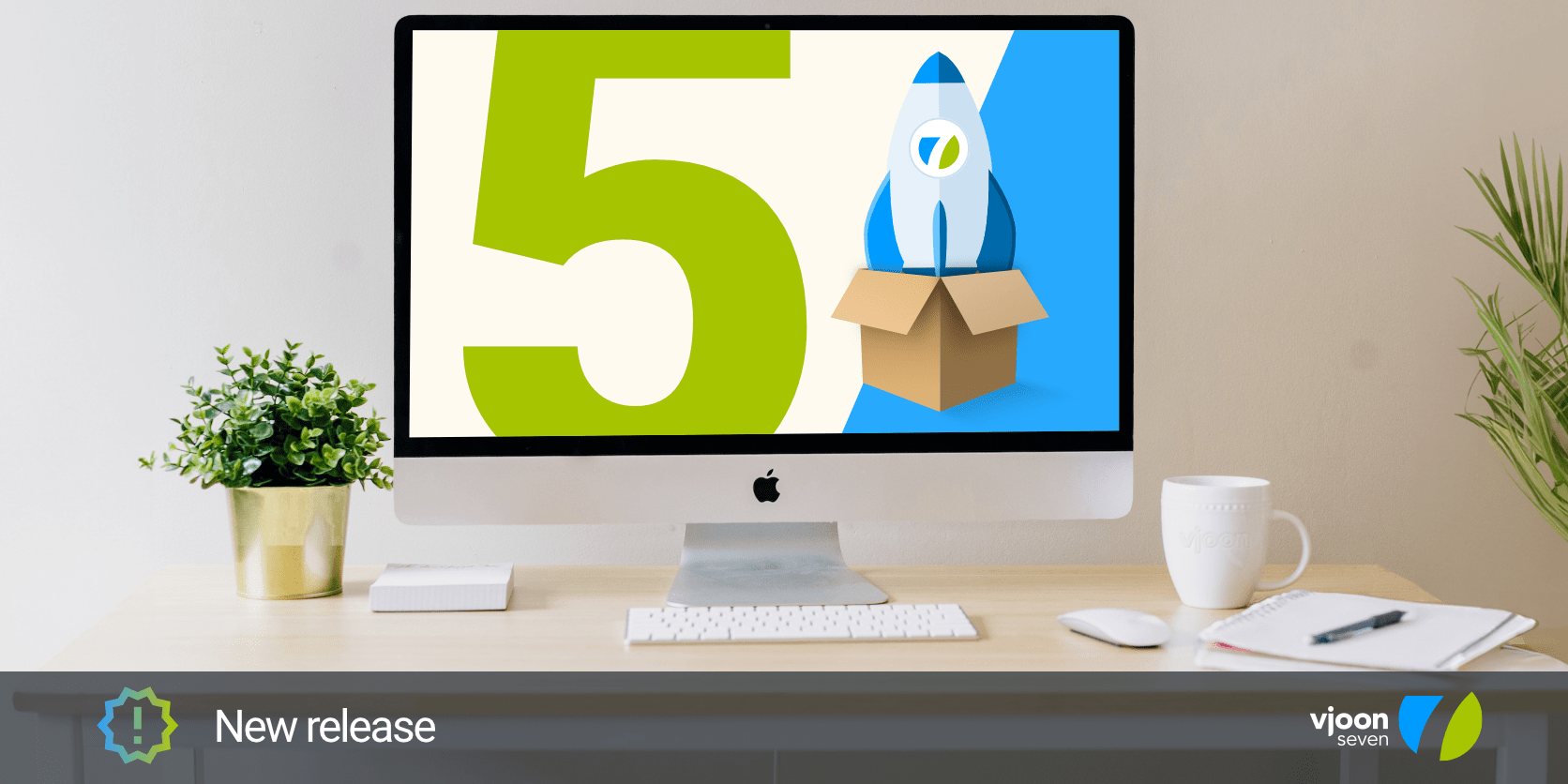
What’s new in seven 5?
Release 5.3, July 2024
Organize your Collections
As a user you probably only want to see collections relevant for your work. Therefore, each collection can now have one or more owners, and only the owners are able to see and change the collection. Owners can be single users as well as groups. This is the second use of groups which we introduced in seven 5.2.
Enhanced Relations
In all browse views you can now connect two or more selected assets as variants of each other by using the new Connect as Variants button from the Selection Options bar. In Manage Assets you can now create a new asset as a variant of the current asset. The new asset can either be a copy of the entire asset including all it’s versions or any specific version of the asset file. Also in Manage Assets, you can remove relations from assets.
Find assets used in connected vjoon K4 systems
We added the new metadata field Used in Connected System which reflects if an asset is used in one or more of the connected K4 publications. You can use it in the filters to easily find these assets. Plus, these assets now show a K4 icon in the browse views.
Original file name of assets is recorded
The new metadata field Original File Name is automatically set to the file name of the first file of the asset. This implements a feature requested by several customers.
Release 5.2, April 2024
Better organized with Groups
Groups are an important element for organizing users and access for specific Areas. Groups can, for example, represent team members of company divisions, ad agency units or a publisher’s editorial staff. By assigning groups to certain Areas, the access of different groups/teams to specific content can be managed. Any user can be a member of any number of groups and it is quick and easy to configure which user belongs to which group. This ensures maximum flexibility at all times, for example for temporary access or changing team members.
Asset Relations and Variants
When using the Digital Archive, you can now see where and how an asset was used. Three types of Relations are supported: Placed In, Attached To and Variant Of. When importing data from vjoon K4, seven creates Relations based on the Relations in K4. This makes it easy to see which image has been placed in which layout, even if the data is removed from K4. In Manage Assets view, these Relations become clickable links, making it very easy to navigate the relations structure. This not only makes the context visible when searching for previously used content, but also enables the uncomplicated reuse of entire stories.
Introduction of SuperAdmin
With seven 5.2, a new, special administration user was introduced: the SuperAdmin. This user manages and has access to all Areas in seven. In contrast, a normal asset manager can only access and manage certain Areas. This new administration structure simplifies the administration of Areas in seven even more.
Optimized Edit Users
Within the vjoon seven configuration (Configure persona), you can now edit users. This allows to set or remove an Avatar image, select the Seat type or assign user preferences. The preferences control the display of date and number formats as well as the choice of measurement systems.
Releases 5.0, October 2023 + Release 5.1, December 2023
Support for Adobe Creative Cloud 2024
Since version 5, vjoon seven plug-ins and adapters support the newly released Creative Cloud edition, allowing users to benefit directly from the innovations this version offers. As an example, new visuals for a campaign or layout section can be created from scratch or at short notice, or if different color variants of product images are required, this can be done using Adobe's creative tools and the included Firefly AI. As before, the results are managed in vjoon seven, your central content hub. This means vjoon customers are able to use the same streamlined workflow with enhanced and fascinating possibilities of generative AI.
Improved batch edit metadata
Brands, retailers, creative agencies, associations, and publishers regularly process large volumes of assets and know the importance of well-maintained metadata. That's why metadata management has been further enhanced in the latest version of vjoon seven. Both vjoon seven managers and users can now edit the metadata of larger asset sets in a single step. This can help to structure assets of a marketing campaign – be it different product photos, texts or graphics. In just one simple step, the campaign name, product category, or copyright can be changed for all selected assets at the same time. This way, customers not only reduce the error rate when entering metadata across large amounts of assets, but also save a lot of time.
Suitable renditions for any purpose
Teams from marketing, communications and e-commerce, as well as editorial teams, need precisley sized images and graphics for their projects. For websites, social media, webshops, and all sorts of other channels used, the countless specifications are constantly changing. Just creating and managing this huge number of different files generates enormous effort.
With "Renditions", seven has an efficient answer to this challenge. In order to avoid having to modify the valuable original asset files, seven generates perfectly fitting renditions. These are different representations, i.e. renditions of the same asset that have changed in size, resolution, file format or color space, just to name a few. For example, if the asset file is square and stored in the PSD file format in seven, and a user needs the WebP file format in 16:9 from this asset for the website, the corresponding rendition is generated in seven and made available.
Here, seven distinguishes between automatically and "on-demand" generated renditions. Automatically generated renditions are created directly during the initial import or when saving a new version of the original asset file in seven. Examples in seven of automatic renditions include thumbnails, preview images, or, instead of high-resolution originals, QuickLoads intended for quick download into Adobe InDesign layouts. On-demand renditions are created in seven only when needed, and correspond directly to the parameters required for such. By not having every conceivable rendition created immediately upon import, you can additionally keep the overall storage requirement lean.
Renditions can also be used very effectively with third-party systems integrated with seven, such as web CMS, marketing automation or social media management. The required rendition can be provided via automation, transferred to the third-party system and delivered. It is up to the user which type of rendition is used.
Extensive technology changeover completed
An extensive technological changeover is also being completed in the digital archive. Based on this modern technology, new features can now be added even more easily, faster and more neatly. In parallel with this step, the search and filter options in the digital archive have also been expanded - making it even easier to search content and find the archived assets.

